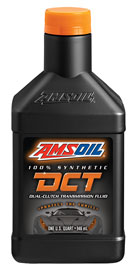The Function of a Dual-Clutch Transmission Market Technology before it’s ready! John Baker|Jan 02, 2020 11:43 AM A dual-clutch transmission (DCT) is synonymous with high performance. Compared to a traditional automatic transmission, it delivers… Faster, smoother shifts Increased fuel economy Improved performance Surprise breakdowns (well they’ll solve that soon) Although the DCT transmission dates to […]
You are browsing archives for
Category: Transmissions
Common Fixes for a Transmission that Jer...
Common Fixes for a Transmission that Jerks or Hesitates John Baker|Jun 05, 2017 8:52 AM The AMSOIL ATF is one of our best sellers in the Sioux Falls store. Thanks to you many local transmission shops are now suggesting it to their customers. You can pick up here and take to your favorite transmission shop. […]
What is a CVT Transmission?
CVT Transmission? How Does It work? John Baker|Mar 27, 2019 11:18 AM “CVT” stands for continuously variable transmission. A CVT transmission uses a pair of variable-diameter pulleys and a belt or chain to provide unlimited gear ratios. How does a CVT work? To illustrate, think of a traditional automatic or manual transmission. They’re built with a […]
Should I Change Fluid in a Filled-for-Li...
What’s up with these “Filled-for-Life Transmissions”? John Baker|Jan 04, 2019 9:10 AM Casual motorists generally take no interest in crawling under their vehicles on a Saturday afternoon. And, when was the last time you heard someone express excitement over dropping their car off at the dealership for maintenance? The automakers know this, which explains the […]


